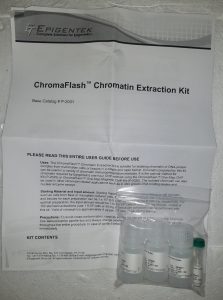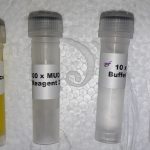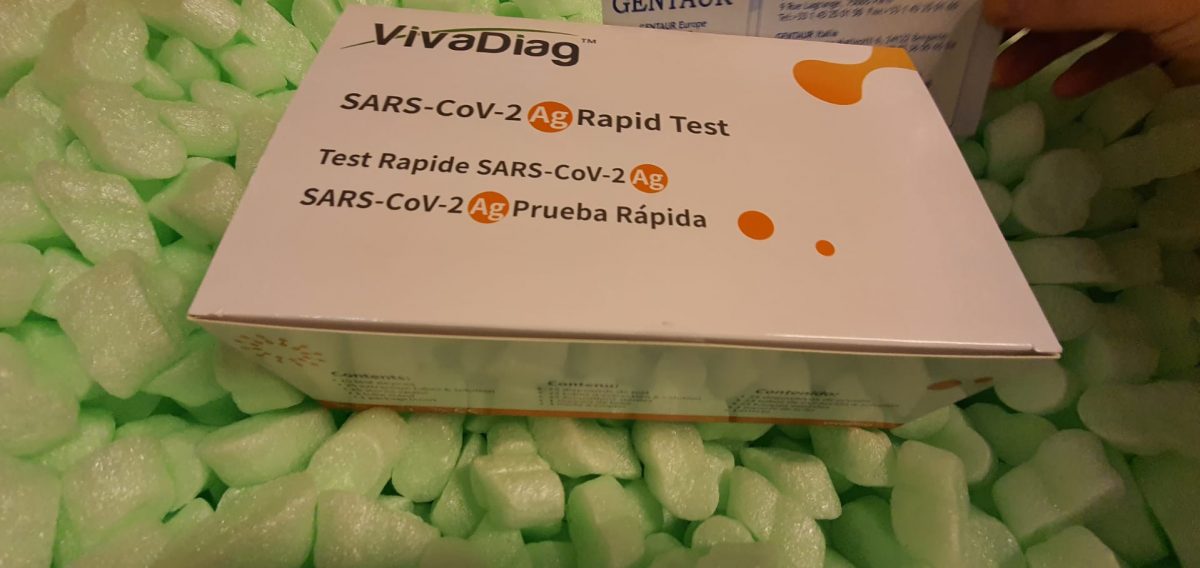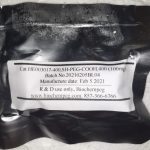Purpose: Vogt-Koyanagi-Harada (VKH) disease is a rare autoimmune disease. The autoimmune response in VKH disease is against the melanin-producing cells; therefore, in affected individuals melanocyte-containing organs manifest disease symptoms including eyes, ears, skin and nervous system. VKH is a multifactorial disease, and the precise cause of the VKH disease is unknown. Studies have suggested that both environmental and genetic factors are responsible for the VKH disease. In this review, the authors have collected all the available literature on the genetics of VKH to their knowledge and discussed the role of genetic variants in causing VKH disease.
Methods: An extensive literature search was performed in order to review all the published studies regarding VKH clinical phenotyping and genetic variants in VKH disease. Medline, PubMed, Cochrane library, and Scopus was searched using combination of keywords.
Results: It was found that variants in HLA genes, IL-12b, TNFSF4, and miR-20-5p genes are significantly associated with VKH; however, variants in genes ATG10, TNIP1 and CLEC16A did not achieve significant genome-wide association threshold. Moreover, polymorphisms in TNIP1 and CLEC16A play a protective role against VKH.
Conclusion: The authors conclude that increased sample size and a more homogeneous VKH patient population may reveal a significant association of variants in ATG10, TNIP1 and CLEC16A genes with VKH disease.
Expression changes of cytotoxicity and apoptosis genes in HTLV-1-associated myelopathy/tropical spastic paraparesis patients from the perspective of system virology
Although human T-cell lymphotropic virus type-1 (HTLV-1) was the first retrovirus among human pathogens to be identified, insufficient information on the pathogenesis of HTLV-1 infection means that no precise mechanism has yet been provided for HTLV-1-associated myelopathy/tropical spastic paraparesis (HAM/TSP).
Based on previous studies, it was found that apoptosis and inflammation stimulation were among the most important mechanisms underlying HAM/TSP. The present study provides an in-silico analysis of the microarray data related to HAM/TSP patients. Expression changes of the genes responsible for cytotoxicity and apoptosis processes of HAM/TSP patients and asymptomatic carriers were investigated.
Expression of the genes involved in cytotoxicity and apoptosis in HAM/TSP patients was decreased; hence, a model was proposed indicating that the spread of immune responses in HAM/TSP may be due to expression of HTLV-1 virulence factors and the resistance of HTLV-1-infected cells to apoptosis.
Characterization of PcLEA14, a Group 5 Late Embryogenesis Abundant Protein Gene from Pear ( Pyruscommunis)
Fruit trees need to overcome harsh winter climates to ensure perennially; therefore, they are strongly influenced by environmental stress. In the present study, we focused on the pear homolog PcLEA14 belonging to the unique 5C late embryogenesis abundant (LEA) protein group for which information is limited on fruit trees. PcLEA14 was confirmed to belong to this protein group using phylogenetic tree analysis, and its expression was induced by low-temperature stress. The seasonal fluctuation in its expression was considered to be related to its role in enduring overwinter temperatures, which is particularly important in perennially.
Moreover, the function of PcLEA14 in low-temperature stress tolerance was revealed in transgenic Arabidopsis. Subsequently, the pear homolog of dehydration-responsive element-binding protein/C-repeat binding factor1 (DREB1), which is an important transcription factor in low-temperature stress tolerance and is uncharacterized in pear, was analyzed after bioinformatics analysis revealed the presence of DREB cis-regulatory elements in PcLEA14 and the dormancy-related gene, both of which are also expressed during low temperatures.
Among the five PcDREBs, PcDREB1A and PcDREB1C exhibited similar expression patterns to PcLEA14 whereas the other PcDREBs were not expressed in winter, suggesting their different physiological roles. Our findings suggest that the low-temperature tolerance mechanism in overwintering trees is associated with group 5C LEA proteins and DREB1.
A role for microRNAs in the epigenetic control of sexually dimorphic gene expression in the human placenta
Aim: The contribution of miRNAs as epigenetic regulators of sexually dimorphic gene expression in the placenta is unknown.
Materials & methods: 382 placentas from the extremely low gestational age newborns (ELGAN) cohort were evaluated for expression levels of 37,268 mRNAs and 2,102 miRNAs using genome-wide RNA-sequencing. Differential expression analysis was used to identify differences in the expression based on the sex of the fetus.
Results: Sexually dimorphic expression was observed for 128 mRNAs and 59 miRNAs. A set of 25 miRNA master regulators was identified that likely contribute to the sexual dimorphic mRNA expression.
Conclusion: These data highlight sex-dependent miRNA and mRNA patterning in the placenta and provide insight into a potential mechanism for observed sex differences in outcomes.
Oxidative Stress and Analysis of Selected SNPs of ACHE (rs 2571598), BCHE (rs 3495), CAT (rs 7943316), SIRT1 (rs 10823108), GSTP1 (rs 1695), and Gene GSTM1, GSTT1 in Chronic Organophosphates Exposed Groups from Cameroon and Pakistan
The detrimental effects of organophosphates (OPs) on human health are thought to be of systemic, i.e., irreversible inhibition of acetylcholinesterase (AChE) at nerve synapses. However, several studies have shown that AChE inhibition alone cannot explain all the toxicological manifestations in prolonged exposure to OPs.
The present study aimed to assess the status of antioxidants malondialdehyde (MDA), superoxide dismutase (SOD), glutathione (GSH) (reduced), catalase, and ferric reducing antioxidant power (FRAP) in chronic OP-exposed groups from Cameroon and Pakistan.
Molecular analysis of genetic polymorphisms (SNPs) of glutathione transferases (GSTM1, GSTP1, GSTT1), catalase gene (CAT, rs7943316), sirtuin 1 gene (SIRT1, rs10823108), acetylcholinesterase gene (ACHE, rs2571598), and butyrylcholinesterase gene (BCHE, rs3495) were screened in the OP-exposed individuals to find the possible causative association with oxidative stress and toxicity.
Cholinesterase and antioxidant activities were measured by colorimetric methods using a spectrophotometer. Salting-out method was employed for DNA extraction from blood followed by restriction fragment length polymorphism (RFLP) for molecular analysis. Cholinergic enzymes were significantly decreased in OP-exposed groups. Catalase and SOD were decreased and MDA and FRAP were increased in OP-exposed groups compared to unexposed groups in both groups. GSH was decreased only in Pakistani OPs-exposed group.
Molecular analysis of ACHE, BCHE, Catalase, GSTP1, and GSTM1 SNPs revealed a tentative association with their phenotypic expression that is level of antioxidant and cholinergic enzymes. The study concludes that chronic OPs exposure induces oxidative stress which is associated with the related SNP polymorphism. The toxicogenetics of understudied SNPs were examined for the first time to our understanding. The findings may lead to a newer area of investigation on OPs induced health issues and toxicogenetics.

stjosephs-hospital
Efficient Non-Viral Gene Modification of Mesenchymal Stromal Cells from Umbilical Cord Wharton’s Jelly with Polyethylenimine
- Mesenchymal stromal cells (MSC) derived from human umbilical cord Wharton’s jelly (WJ) have a wide therapeutic potential in cell therapy and tissue engineering because of their multipotential capacity, which can be reinforced through gene therapy in order to modulate specific responses. However, reported methodologies to transfect WJ-MSC using cationic polymers are scarce. Here, WJ-MSC were transfected using 25 kDa branched- polyethylenimine (PEI) and a DNA plasmid encoding GFP.
- PEI/plasmid complexes were characterized to establish the best transfection efficiencies with lowest toxicity. Expression of MSC-related cell surface markers was evaluated. Likewise, immunomodulatory activity and multipotential capacity of transfected WJ-MSC were assessed by CD2/CD3/CD28-activated peripheral blood mononuclear cells (PBMC) cocultures and osteogenic and adipogenic differentiation assays, respectively.
- An association between cell number, PEI and DNA content, and transfection efficiency was observed. The highest transfection efficiency (15.3 ± 8.6%) at the lowest toxicity was achieved using 2 ng/μL DNA and 3.6 ng/μL PEI with 45,000 WJ-MSC in a 24-well plate format (200 μL).
- Under these conditions, there was no significant difference between the expression of MSC-identity markers, inhibitory effect on CD3+ T lymphocytes proliferation and osteogenic/adipogenic differentiation ability of transfected WJ-MSC, as compared with non-transfected cells. These results suggest that the functional properties of WJ-MSC were not altered after optimized transfection with PEI.
 FYN Antibody |
|
43186 |
SAB |
100ul |
EUR 319 |
 FYN Antibody |
|
43186-100ul |
SAB |
100ul |
EUR 302.4 |
 FYN Antibody |
|
E043186 |
EnoGene |
100μg/100μl |
EUR 255 |
|
Description: Available in various conjugation types. |
 FYN Antibody |
|
E10-30229 |
EnoGene |
100μg/100μl |
EUR 225 |
|
Description: Available in various conjugation types. |
 FYN Antibody |
|
E10-30230 |
EnoGene |
100μg/100μl |
EUR 225 |
|
Description: Available in various conjugation types. |
 Fyn Antibody |
|
E18-6102-1 |
EnoGene |
50μg/50μl |
EUR 145 |
|
Description: Available in various conjugation types. |
 Fyn Antibody |
|
E18-6102-2 |
EnoGene |
100μg/100μl |
EUR 225 |
|
Description: Available in various conjugation types. |
 Fyn Antibody |
|
E8RT1235 |
EnoGene |
100ul |
EUR 225 |
|
Description: Available in various conjugation types. |
 FYN Antibody |
|
E38PA6363 |
EnoGene |
100ul |
EUR 225 |
|
Description: Available in various conjugation types. |
 FYN Antibody |
|
E306421 |
EnoGene |
100ug/200ul |
EUR 275 |
|
Description: Available in various conjugation types. |
 FYN antibody |
|
70R-31289 |
Fitzgerald |
100 ug |
EUR 294 |
|
|
|
Description: Rabbit polyclonal FYN antibody |
 FYN antibody |
|
70R-5772 |
Fitzgerald |
50 ug |
EUR 467 |
|
|
|
Description: Rabbit polyclonal FYN antibody raised against the N terminal of FYN |
 FYN antibody |
|
70R-5867 |
Fitzgerald |
50 ug |
EUR 467 |
|
|
|
Description: Rabbit polyclonal FYN antibody raised against the middle region of FYN |
 FYN antibody |
|
70R-49768 |
Fitzgerald |
100 ul |
EUR 286 |
|
|
|
Description: Purified Polyclonal FYN antibody |
 FYN Antibody |
|
1-CSB-PA008520 |
Cusabio |
-
Ask for price
-
Ask for price
|
|
|
|
|
Description: A polyclonal antibody against FYN. Recognizes FYN from Human, Mouse, Rat. This antibody is Unconjugated. Tested in the following application: WB, ELISA;WB:1/500-1/2000.ELISA:1/10000 |
 FYN Antibody |
|
1-CSB-PA009101LA01HU |
Cusabio |
-
Ask for price
-
Ask for price
|
|
|
|
|
Description: A polyclonal antibody against FYN. Recognizes FYN from Human. This antibody is Unconjugated. Tested in the following application: ELISA, IHC, IF; Recommended dilution: IHC:1:20-1:200, IF:1:50-1:200 |
 FYN Antibody |
|
1-CSB-PA225018 |
Cusabio |
-
Ask for price
-
Ask for price
|
|
|
|
|
Description: A polyclonal antibody against FYN. Recognizes FYN from Human, Mouse, Rat. This antibody is Unconjugated. Tested in the following application: ELISA, WB;ELISA:1:2000-1:5000, WB:1:500-1:2000 |
 FYN Antibody |
|
1-CSB-PA143385 |
Cusabio |
-
Ask for price
-
Ask for price
|
|
|
|
|
Description: A polyclonal antibody against FYN. Recognizes FYN from Human, Mouse, Rat. This antibody is Unconjugated. Tested in the following application: ELISA, WB;ELISA:1:2000-1:5000, WB:1:500-1:2000 |
 FYN Antibody |
|
1-CSB-PA002595 |
Cusabio |
-
Ask for price
-
Ask for price
|
|
|
|
|
Description: A polyclonal antibody against FYN. Recognizes FYN from Human, Mouse, Rat. This antibody is Unconjugated. Tested in the following application: WB, ELISA;WB:1/500-1/2000.ELISA:1/5000 |
 Fyn Antibody |
|
F44219-0.08ML |
NSJ Bioreagents |
0.08 ml |
EUR 140.25 |
|
|
|
Description: Implicated in the control of cell growth. Plays a role in the regulation of intracellular calcium levels, with isoform 2 showing the greater ability to mobilize cytoplasmic calcium in comparison to isoform 1. Required in brain development and mature brain function with important roles in the regulation of axon growth, axon guidance, and neurite extension. Blocks axon outgrowth and attraction induced by NTN1 by phosphorylating its receptor DDC. |
 Fyn Antibody |
|
F44219-0.4ML |
NSJ Bioreagents |
0.4 ml |
EUR 322.15 |
|
|
|
Description: Implicated in the control of cell growth. Plays a role in the regulation of intracellular calcium levels, with isoform 2 showing the greater ability to mobilize cytoplasmic calcium in comparison to isoform 1. Required in brain development and mature brain function with important roles in the regulation of axon growth, axon guidance, and neurite extension. Blocks axon outgrowth and attraction induced by NTN1 by phosphorylating its receptor DDC. |
 FYN Antibody |
|
F50706-0.08ML |
NSJ Bioreagents |
0.08 ml |
EUR 140.25 |
|
|
|
Description: FYN is a non-receptor tyrosine-protein kinase that plays a role in many biological processes including regulation of cell growth and survival, cell adhesion, integrin-mediated signaling, cytoskeletal remodeling, cell motility, immune response and axon guidance. |
 FYN Antibody |
|
F50706-0.4ML |
NSJ Bioreagents |
0.4 ml |
EUR 322.15 |
|
|
|
Description: FYN is a non-receptor tyrosine-protein kinase that plays a role in many biological processes including regulation of cell growth and survival, cell adhesion, integrin-mediated signaling, cytoskeletal remodeling, cell motility, immune response and axon guidance. |
 FYN Antibody |
|
F50707-0.08ML |
NSJ Bioreagents |
0.08 ml |
EUR 140.25 |
|
|
|
Description: FYN is a member of the protein-tyrosine kinase oncogene family. It encodes a membrane-associated tyrosine kinase that has been implicated in the control of cell growth. The protein associates with the p85 subunit of phosphatidylinositol 3-kinase and interacts with the fyn-binding protein. |
 FYN Antibody |
|
F50707-0.4ML |
NSJ Bioreagents |
0.4 ml |
EUR 322.15 |
|
|
|
Description: FYN is a member of the protein-tyrosine kinase oncogene family. It encodes a membrane-associated tyrosine kinase that has been implicated in the control of cell growth. The protein associates with the p85 subunit of phosphatidylinositol 3-kinase and interacts with the fyn-binding protein. |
 FYN Antibody |
|
F52448-0.08ML |
NSJ Bioreagents |
0.08 ml |
EUR 140.25 |
|
|
|
Description: Non-receptor tyrosine-protein kinase that plays a role in many biological processes including regulation of cell growth and survival, cell adhesion, integrin-mediated signaling, cytoskeletal remodeling, cell motility, immune response and axon guidance. Inactive FYN is phosphorylated on its C-terminal tail within the catalytic domain. Following activation by PKA, the protein subsequently associates with PTK2/FAK1, allowing PTK2/FAK1 phosphorylation, activation and targeting to focal adhesions. Involved in the regulation of cell adhesion and motility through phosphorylation of CTNNB1 (beta-catenin) and CTNND1 (delta- catenin). Regulates cytoskeletal remodeling by phosphorylating several proteins including the actin regulator WAS and the microtubule-associated proteins MAP2 and MAPT. Promotes cell survival by phosphorylating AGAP2/PIKE-A and preventing its apoptotic cleavage. Participates in signal transduction pathways that regulate the integrity of the glomerular slit diaphragm (an essential part of the glomerular filter of the kidney) by phosphorylating several slit diaphragm components including NPHS1, KIRREL and TRPC6. Plays a role in neural processes by phosphorylating DPYSL2, a multifunctional adapter protein within the central nervous system, ARHGAP32, a regulator for Rho family GTPases implicated in various neural functions, and SNCA, a small pre-synaptic protein. Participates in the downstream signaling pathways that lead to T-cell differentiation and proliferation following T-cell receptor (TCR) stimulation. Also participates in negative feedback regulation of TCR signaling through phosphorylation of PAG1, thereby promoting interaction between PAG1 and CSK and recruitment of CSK to lipid rafts. CSK maintains LCK and FYN in an inactive form. Promotes CD28-induced phosphorylation of VAV1. |
 FYN Antibody |
|
F52448-0.4ML |
NSJ Bioreagents |
0.4 ml |
EUR 330.65 |
|
|
|
Description: Non-receptor tyrosine-protein kinase that plays a role in many biological processes including regulation of cell growth and survival, cell adhesion, integrin-mediated signaling, cytoskeletal remodeling, cell motility, immune response and axon guidance. Inactive FYN is phosphorylated on its C-terminal tail within the catalytic domain. Following activation by PKA, the protein subsequently associates with PTK2/FAK1, allowing PTK2/FAK1 phosphorylation, activation and targeting to focal adhesions. Involved in the regulation of cell adhesion and motility through phosphorylation of CTNNB1 (beta-catenin) and CTNND1 (delta- catenin). Regulates cytoskeletal remodeling by phosphorylating several proteins including the actin regulator WAS and the microtubule-associated proteins MAP2 and MAPT. Promotes cell survival by phosphorylating AGAP2/PIKE-A and preventing its apoptotic cleavage. Participates in signal transduction pathways that regulate the integrity of the glomerular slit diaphragm (an essential part of the glomerular filter of the kidney) by phosphorylating several slit diaphragm components including NPHS1, KIRREL and TRPC6. Plays a role in neural processes by phosphorylating DPYSL2, a multifunctional adapter protein within the central nervous system, ARHGAP32, a regulator for Rho family GTPases implicated in various neural functions, and SNCA, a small pre-synaptic protein. Participates in the downstream signaling pathways that lead to T-cell differentiation and proliferation following T-cell receptor (TCR) stimulation. Also participates in negative feedback regulation of TCR signaling through phosphorylation of PAG1, thereby promoting interaction between PAG1 and CSK and recruitment of CSK to lipid rafts. CSK maintains LCK and FYN in an inactive form. Promotes CD28-induced phosphorylation of VAV1. |
 FYN Antibody |
|
R36336-100UG |
NSJ Bioreagents |
100 ug |
EUR 339.15 |
|
|
|
Description: Additional name(s) for this target protein: FYN oncogene related to SRC FGR YES; src-like kinase (SLK) |
 FYN Antibody |
|
MBS7136723-005mL |
MyBiosource |
0.05mL |
EUR 220 |
 FYN Antibody |
|
MBS7136723-5x01mL |
MyBiosource |
5x0.1mL |
EUR 1350 |
 FYN Antibody |
|
MBS7130174-005mL |
MyBiosource |
0.05mL |
EUR 190 |
 FYN Antibody |
|
MBS7130174-5x01mL |
MyBiosource |
5x0.1mL |
EUR 1205 |
 FYN Antibody |
|
MBS7130175-005mL |
MyBiosource |
0.05mL |
EUR 190 |
 FYN Antibody |
|
MBS7130175-5x01mL |
MyBiosource |
5x0.1mL |
EUR 1205 |
 FYN Antibody |
|
MBS7005454-005mg |
MyBiosource |
0.05mg |
EUR 190 |
 FYN Antibody |
|
MBS7005454-5x01mg |
MyBiosource |
5x0.1mg |
EUR 1205 |
 FYN Antibody |
|
MBS7119300-005mg |
MyBiosource |
0.05mg |
EUR 150 |
 FYN Antibody |
|
MBS7119300-5x01mg |
MyBiosource |
5x0.1mg |
EUR 845 |
 FYN Antibody |
|
MBS7122025-005mg |
MyBiosource |
0.05mg |
EUR 150 |
 FYN Antibody |
|
MBS7122025-5x01mg |
MyBiosource |
5x0.1mg |
EUR 845 |
 FYN Antibody |
|
MBS8584050-01mLAF405L |
MyBiosource |
0.1mL(AF405L) |
EUR 465 |
 FYN Antibody |
|
MBS8584050-01mLAF405S |
MyBiosource |
0.1mL(AF405S) |
EUR 465 |
 FYN Antibody |
|
MBS8584050-01mLAF610 |
MyBiosource |
0.1mL(AF610) |
EUR 465 |
 FYN Antibody |
|
MBS8584050-01mLAF635 |
MyBiosource |
0.1mL(AF635) |
EUR 465 |










































































